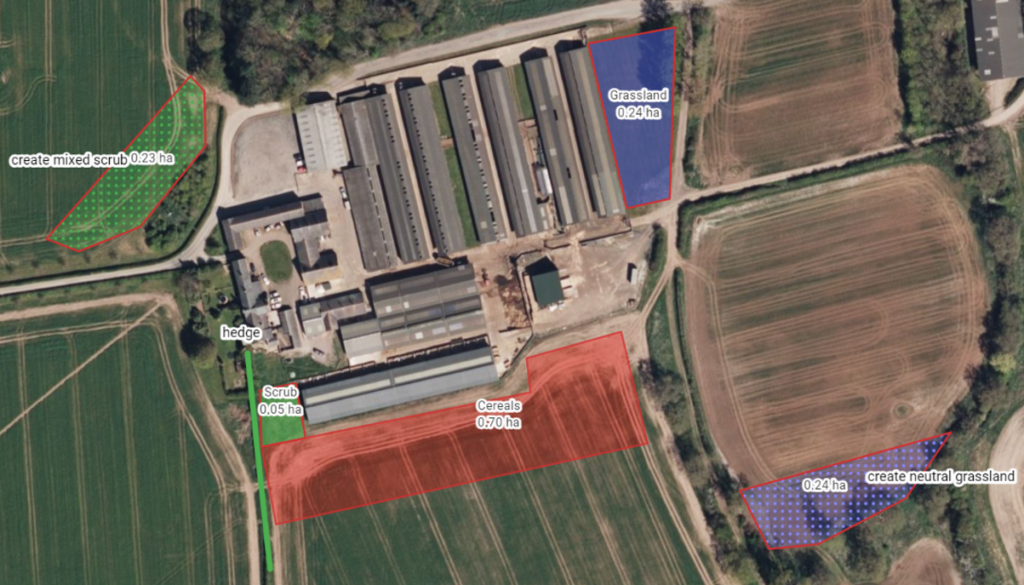
Planning and Biodiversity Net Gain
The majority of planning applications now require 10% Biodiversity Net Gain. While this may seem onerous most typical applications by farmers and landowners for new sheds, slurry lagoons etc will be able to meet the requirements on farm through modest areas of habitat enhancement or creation.
The process involves a before calculation of biodiversity on the proposed site and an after calculation once the development has been done and must show a 10% improvement. Calculations are done through the statutory Natural England metric tool and must be included with your planning application at an early stage. The calculations must be completed by a suitably qualified ecologist (we can all do it at ELM Associates!) and include details on the new habitat enhancements to achieve 10% net gain. The planning authority will want details on what type of habitat enhancement is being proposed, who is responsible for creating the habitat and how you will maintain the new habitat. Simple habitats that the majority of farmers can do include tree and scrub planting, hedge planting or grassland sward improvements for biodiversity.
In the example above, the farmyard is being extended east and south – the blue grassland, red cereal field and green scrub areas will be lost. The net gain is easily achieved by the new mixed scrub and new grassland (dotted areas).
